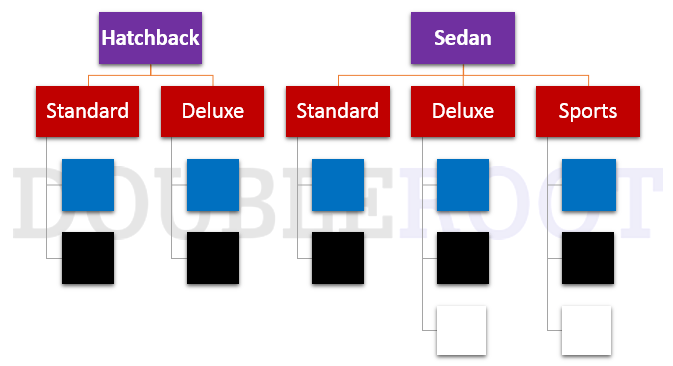Now that we’ve some idea about the fundamental principles of counting, let’s dig a little deeper to understand them better.
Let us come back to the cars example again.
Suppose the Sports model exists only for the sedan and not for the hatchback. How many different types of cars are there now?
Let us list all the possible cases again.

We can see that there are now 5 different types of cars, instead of 6 – 2 different hatchbacks and 3 different sedans.
In this case we cannot apply the multiplication principle directly, because each of the categories is not available in all the three models. Therefore we have to separate out the cases and count them individually.
Let’s bring in the colors now. Suppose all models are available in both blue and black. How many different cars would be there?

As you can see, there are 10 different cars.
In this case, we’ll have to use both the addition and the multiplication principles together.
There would be 2 x 2 = 4 hatchbacks, and 3 x 2 = 6 sedans, making a total of 10 different types of cars.
Or, total number of cars = (2 x 2) + (3 x 2) = 10.
Let’s complicate the problem a little more.
Suppose that the Deluxe and the Sports versions of the sedan category are also available in white. How many different cars are available now?

This time the total can be calculated as (2 x 2) + (1 x 2) + (2 x 3) = 12.
2 x 2 = 4 hatchbacks. And (1 x 2) + (2 x 3) = 8 sedans. A total of 12.
Thus, whenever the things to be counted need to be separated into cases, we count the cases separately and add them together.
That’s it for this lesson. I hope you’ve got some idea about when to add and when to multiply cases. Don’t worry if you’re unable to get it, I’ll cover a variety of examples in the next lesson which would illustrate these two principles.
Till then, goodbye.